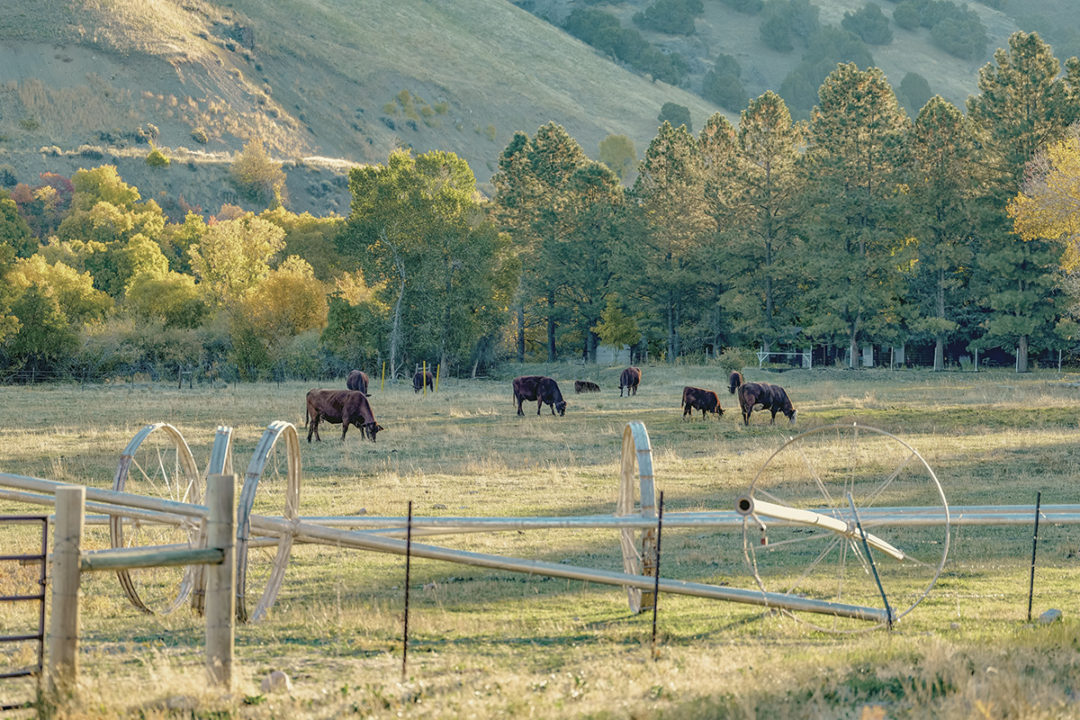Following drought, stand damage is readily apparent, even on well-managed pastures. When drought occurs during active growth of warm-season grass pastures, it is almost certain that root growth will be restricted, in addition to the more obvious decline in forage yield. The extent of stand damage due to differences in soil types, fertility practices, grazing management, pasture species and harvest management is somewhat easy to determine. Factors such as low fertility, overstocking, weed infestations and low soil pH can make drought detrimental to a forage stand. Some best management practices can improve drought recovery of pastures and hay meadows, such as fertility management, grazing management and weed control.
Fertility management
Pastures on lighter soils will generally show greater damage than stands on heavier soils. Pastures with lower fertility levels that were overgrazed will most likely have greater damage than non-grazed pastures. Plant fertility needs should be given special consideration in drought-damaged pastures.
Since many of these pastures were grazed repeatedly, it is likely that root growth will be restricted to the top few inches of soil. It is important that these pastures have a strong root system to speed the recovery of drought-damaged pastures. Drought-damaged stands should be managed as a new stand; therefore, it is important that our initial fertilization focus is on adding phosphorus (P) to stimulate root growth. Restricted root growth is more of a concern during and immediately following drought since these are the structures responsible for extracting moisture and nutrients from the soil. It is critical to focus on management practices that enhance root regrowth to facilitate pasture recovery. Nitrogen should only be applied if soil moisture is present.
Once pastures begin to show signs of recovery, additional nitrogen can be applied to increase production if soil moisture is present. Whether pastures are recovering from drought or not, starting with a soil test to determine nutrient status is always the first step in fertility management.
Grazing management
Heavy grazing during drought can severely stress plants. Even prior to drought, heavy grazing reduces the root mass and can make the plants less efficient at utilizing any nutrients and moisture in the soil. It may be necessary to remove livestock from pastures and feed stored feed for some time. Those without adequate facilities may have to establish a sacrifice paddock where feeding can take place. Using some method of deferment or rotation stocking management system allows flexibility for this practice. Using a sacrifice paddock will limit the damage to only one pasture, as opposed to multiple areas.
Animals could also be fed in alleyways or lanes. If feeding livestock in other locations, make sure water is always available. If destocking has occurred due to drought, consider maintaining herd size at that number. It is much more economical to harvest hay from excess forage during sufficient growth than it is to feed stored forage and supplement during drought. It is important to maintain a critical level of stubble height, which will vary depending on forage species. The remaining leaf area provides the energy for plant growth. During drought recovery, this will increase root growth in addition to plant growth.
Weed control
If not managed properly during drought recovery, invasive species will invade and, once established, will be difficult to control or eliminate. The best approach to post-drought pasture management is to reduce competition and focus on moisture conservation and use. Weed species effectively compete with more desirable forage species for sunlight, moisture and soil nutrients. If enough weeds are present in the pasture, the carrying capacity of the pasture is decreased, the nutritive value of the forage is reduced and input costs are increased. When using herbicides to effectively control weed populations, it is important to remember that strict adherence to label directions is required by law. Paying close attention to label directions will also ensure safe, effective and economical use. Herbicide labels contain directions for the proper rate and timing of application, a list of susceptible species, and information regarding cleanup and disposal following use.
Slightly damaged stands (greater than 70% stand) can be classified as fully functional and should recover quickly with weed control, proper fertility and deferred grazing or harvest once satisfactory growing conditions return. Stands that are damaged (between 40%-70% stand) should fully recover with weed control, proper fertility, and deferred grazing or harvest. Severely damaged stands (less than 40% stand) are going to require an enormous level of patience for adequate recovery or it might be necessary to replant entirely.
Pasture recovery following drought is difficult to predict. Good growing conditions, coupled with proper management practices, may result in complete recovery for many drought-damaged stands within one year. However, severely damaged stands may take longer to recover, even with adequate moisture. The key to successful pasture recovery following drought is patience.













